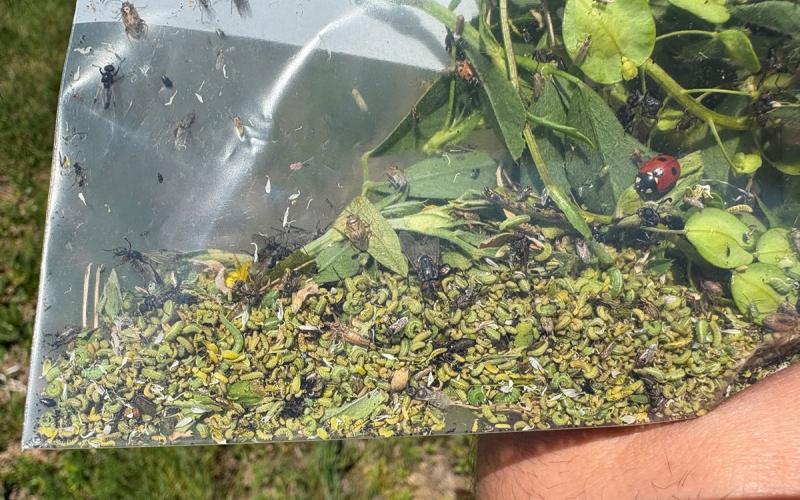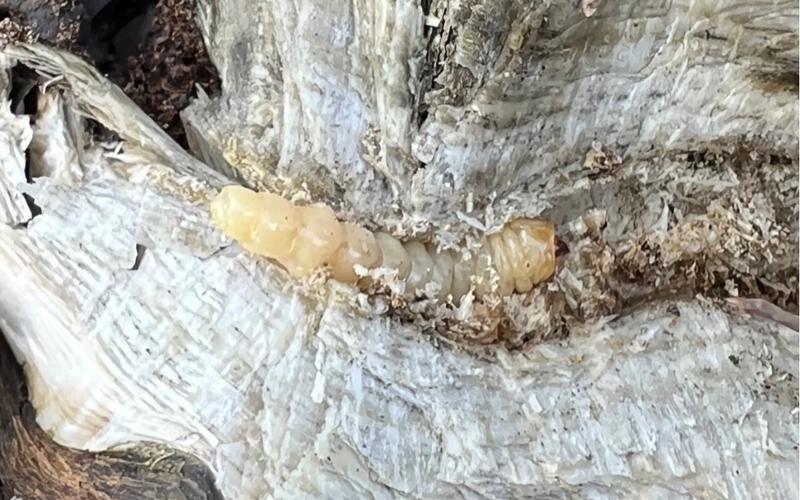It was another cool week for most of South Dakota, with little degree day accumulation occurring. However, alfalfa fields should still be monitored for alfalfa weevil activity, although the cool, wet weather might have slowed the pest down.
Predicting Alfalfa Weevil Activity
The alfalfa weevil defoliates alfalfa as both adults and larvae, but the larvae cause a lot more defoliation than the adults. One of the ways that we can determine when to start scouting for alfalfa weevils is by calculating degree days. In South Dakota, alfalfa weevils overwinter as adults. There are two strains of alfalfa weevil (Eastern and Western) that are present in South Dakota and overlap in most of the state. Although the two strains are nearly identical in appearance, they do differ in their spring emergence patterns, with the Eastern strain emerging earlier in the season than the Western Strain. As a result, it sometimes will appear that there are two generations of alfalfa weevils during the spring.
Accumulated Degree Days
To monitor alfalfa weevil activity, we can estimate activity based on degree day accumulation. The equation for degree days is:
(Maximum Daily Temperature - Minimum Daily Temperature) ÷ 2 - The Developmental Threshold
For the alfalfa weevil, the developmental threshold is 48°F. This equation is used for days that the maximum temperature exceeds 48°F. In cases where the minimum temperature is lower than 48°F, the actual temperature is substituted by the 48°F developmental threshold since no development is occurring below it. Degree day accumulation begins on January 1. First overwintering adult alfalfa weevil activity is generally observed around 200-degree days and larvae hatch is generally around 300-degree days (Table 1).
|
Degree Days |
Alfalfa Weevil Activity (Overwintering as Adults) |
|---|---|
|
|
Limited to no activity of alfalfa weevils. |
|
|
Overwintering adult activity is observed in alfalfa fields (begin scouting fields). |
|
|
Spring laid eggs hatch. First instar larvae begin feeding. |
|
|
Second instar larvae feeding. |
|
|
Third instar larvae feeding. |
|
|
Fourth instar larvae feeding (Period when greatest damage will occur). |
|
|
Pupation. |
|
|
Adult emergence (will overwinter). |
Larval Instars
The alfalfa weevil has four larval instars. With the 1st being the smallest larvae and the 4th being the largest larvae. The later instar larvae will consume additional leaf tissue, which results in increased defoliation. As a result, management would ideally be done while larvae are still in the 1st and 2nd instar growth stages.
Current Accumulated Degree Days
All of the state, with the exception of Gettysburg, has now accumulated over 300-degree days and scouting for alfalfa weevils should begin or be well under way. Alfalfa near Hot Springs and Vermillion should be scouted often as it is likely that fourth instar larvae are present, which cause the most defoliation. It’s important to remember that degree day estimates are not 100% accurate, but instead provide a guideline for when activity is likely.
| Location |
Since January 1, 2019 |
| Buffalo |
|
| Newell |
|
| Rapid City |
|
| Hot Springs |
|
| Lemmon |
|
| Faith |
|
| Cottonwood |
|
| Mission |
|
| Selby |
|
| Gettysburg |
|
| Pierre |
|
| Winner |
|
| Aberdeen |
|
| Huron |
|
| Mitchell |
|
| Tyndall |
|
| Sisseton |
|
| Brookings |
|
| Vermillion |
|


